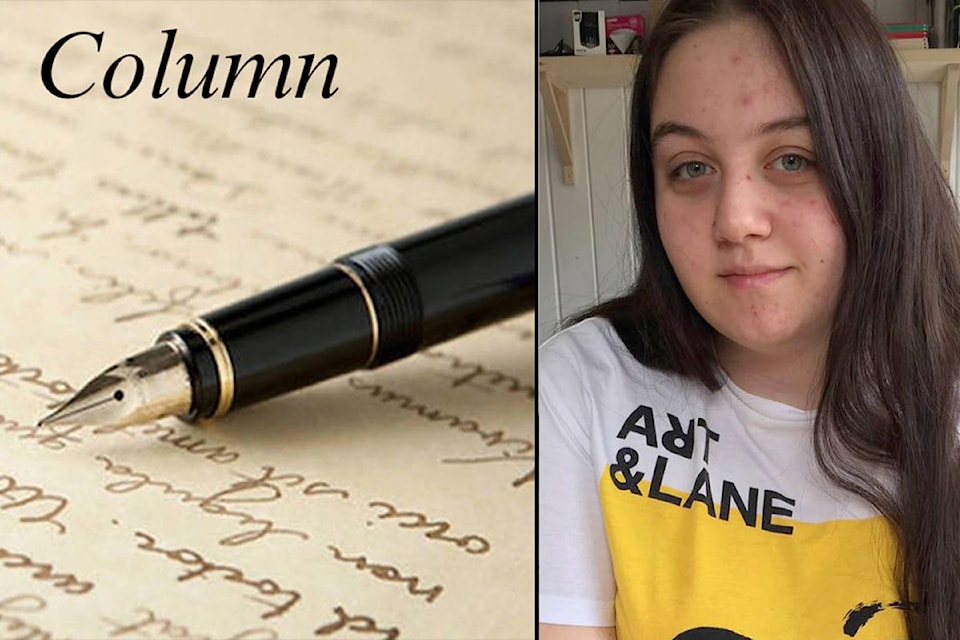By Lauren Stewart
Sardis Secondary
As a high school student, I’m faced with a lot of day-to-day struggles. Feeling pressured to dress a certain way, act a certain way, carry myself in a way to please society; it’s genuinely exhausting.
Fitting social expectations comes in the job description of ‘teenager’ and after almost 10 years of being a teen, I’ve learned to try my best to exist in a way that isn’t controversial.
However, there’s still one thing that no one can seem to get right: Mental health. Teenagers are preprogrammed to be arrogant and often make snap judgments about others. Depression and anxiety have turned into adjectives to describe personality, and asking a peer for a shoulder to lean on has become attention-seeking or ‘being dramatic.’
There’s a rapidly growing stigma around mental health and it isn’t just limited to my high school, but seeing as I spend over 30 hours a week inside the walls of Sardis secondary, noticing the problems surrounding mental health isn’t a difficult task. My high school prides itself in athletics, and the high academic achievements of the students. Having a good reputation among other schools for being unbeatable in sports and math competitions is fantastic, however none of that matters if the students are unhappy.
I did a poll, and out of 47 students, 46 per cent felt that staff doesn’t provide necessary support when it comes to resources for mental health. While 46 per cent might seem slightly surprising, what struck me as even more shocking was that out of those same 47 students, 87 per cent of them said they thought there was a lot of talking about making changes to remove stigma, but nothing actually changing. Having such high percentages, especially from students aged 14 to 17 was a big wake-up call for me. I’ve always known mental health is a touchy subject, but never did it occur to me just how many people think it’s a problem without an active solution.
The solution may seem simple —tell kids to be accepting, and offer their friends help. The problem is, their friend likely has just about as many resources as the person asking for help — which isn’t many.
So what does that leave? There are school counsellors, but at the beginning of the year during the welcoming assembly it’s made very clear that they aren’t there for personal counselling. The option is there, but they stress that the amount of personal help they can offer is extremely limited.
Now sitting back and looking at those two options, ask a friend, or tread lightly on what you tell the counsellors, neither one is a great solution. It feels like our school is understaffed in terms of counsellors and administrative staff, but that shouldn’t be the reason so many students are left without help. If a teenager who’s struggling has no support at home, and no support at school, there’s no one else to ask.
I can’t solve all the problems that I have ambition to solve, but bringing the real, no-sugar-coating issues forth is better than watching the infrastructure of my high school’s student culture collapse. There needs to be more ways to offer kids help, more than just awareness assemblies and rallies.
I can say with certainty that everyone inside that building is aware of the issues that go on, but there is not enough action being taken. The people in power might think we can work out all our problems on our own; they’re under the impression that ignorance is bliss when it comes to teens. However, in this case ignorance is ending up with lower test scores and more students struggling with mental health.
I may not have a huge plan of action to change the entire game, but in the playbook of high school, every person counts.
• Lauren Stewart just completed Grade 11 and starts Grade 12 at Sardis Secondary school in September.
